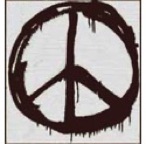Energy Medicine Acupressure Points
"And what is a man without energy? Nothing– nothing at all." ~Mark Twain
The Theory
According to the principles of energy medicine, a “skeleton” of energy supports the physical flesh and bones. The body’s physical structure is built upon and animated by the energy body’s structure of meridian pathways, chakra centers, aura and other discrete energy systems. The energy structure is not just one big electromagnetic field. The variety of components in the energy “skeleton” mirrors the complexity of the physical body.
Anatomy of the Energy Body: The Meridians and Acupuncture Points
The anatomical descriptions of the energy body are supported by electromagnetic measurements. They also correlate with descriptions of energy structures found throughout the world. Each culture has its own understanding and concepts related to the energy body. A meridian carries energy in the same way that an artery transports blood. The meridian system functions as the body’s energy bloodstream. It brings vitality and balance, removes blockages adjusts metabolism, and determines the speed and form of cellular change. The meridian pathway’s energy flow is as critical to the body as the flow of blood. There is no life without energy. Meridians affect all the organs and the physiological systems, including the immune, nervous, endocrine, circulatory, respiratory, digestive, skeletal, muscular, and lymphatic systems. Each system is fed by at least one meridian. Blocked or unregulated energy flow through a meridian will have a negative effect on the system that the meridian feeds.
The meridians include fourteen channels that transport energy into and throughout the body. The meridian pathways also link hundreds of tiny, discrete reservoirs of heat and electromagnetic energy along the surface of the skin.The reservoirs are acupuncture points.When these points are stimulated with needles or physical pressure, energy is released and redistributed along the meridian pathway. According to van der Kolk, et al (1996), effective treatment requires exposure to, without total re-experiencing of, the traumatic material; too much arousal precludes assimilation of any new information. It may be that the tapping protocol in TFT and EFT provides a concrete physical stimulus drawing attention back to the here and now, anchoring clients in the present.It also appears that the physical, rhythmic stimulation has a calming and soothing effect on agitated clients. This is most likely produced by the reciprocal inhibitory relaxation response of the parasympathetic nervous system’s reducing the effects of the hyperactivated sympathetic nervous system. (Carbonell and Figley, 1995)
The Tools
Acupressure Points (based on Traditional Chinese Medicine)
Sea of Tranquility CV 17
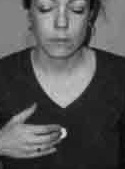
When fearful memories surface, you may feel overwhelmed or in like you are in danger. Anxiety and panic can paralyze breathing or trigger hyperventilation. If this occurs, press the Sea of Tranquility point, which is located four finger-widths above the base of the breastbone, at the level of the heart. Press into the indentations with your middle three finders, breathing deeply through the nose. Try to relax as you focus on taking slow, deep breaths, through the nose, for two minutes. Breathing slowly and deeply through the nose counteracts hyperventilation. Acupressure on this emotional balancing point can open the chest, enhance respiration, and calm a panic or anxiety attack.
Dissociation ST 36
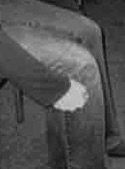
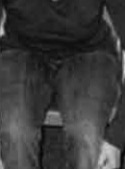
Make two fists. Place your right fist on the outside of your right leg. Place your left fist on the outside of your left leg. Briskly rub your fist up and down beside the shinbone for one minute, breathing deeply into the lower abdomen. Focus on deep exhalations to discharge emotional residue. This acupressure technique helps counteract post-trauma dizziness, anxiety, and dissociation.
Letting Go (Lu 1)
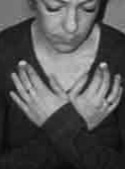
These two emotional healing points are located on the outer sides of the chest, four finger-widths up from the armpit crease and one finger-width inward. To activate these points, cross your arms over the chest center. Place your fingertips firmly on both sides of your outer chest. Breathe deeply and hold these points for up to two minutes. Activation of these healing points helps relieve difficult breathing, trauma, stress, fatigue, confusion, emotional repression, choking, and asthma.
Gates of Consciousness (GB 20)
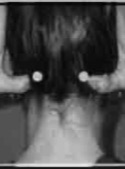
These two points are located about three inches apart. Place the thumbs just below the base of the skull, in the hollow between the two large neck muscles. With your thumbs, press underneath the base of the skull into the indentations on both sides. Close your eyes and slowly tilt your head back. Visualize this mental balancing point relieving your panic and anxiety as you gently press up underneath your skull for one to two minutes. Take slow, deep breaths. These points help relieve headaches, neck stiffness and pain,trauma, shock hypertension, and irritability.
Wind Mansion (GV 16)
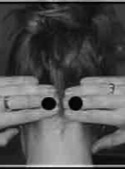
This point is located at the base of the skull, in the large center hollow. To activate this point, place your two middle fingers on the center point. Close your eyes and slowly tilt your head back. Breathe deeply and press firmly into the hollow area for one minute. Activation of this point helps with headaches, pain, insomnia, shock, trauma, stiff neck, head congestion, and mental stress.
Third Eye GV 24.5
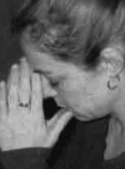
This point is between the eyebrows, in the indentation between the nose bridge and the forehead. To activate this point, sit up with a straight back. Close your eyes and tilt your chin down slightly. Bring your palms together and up to your forehead. Lightly touch the Third Eye point with the tips of your middle and index fingers. Breathe slowly and deeply for one minute as you visualize yourself in a calm, safe, restful place where you can take steps to heal your trauma. Activating this point relieves pain,headaches, dizziness, emotional instability, irritability, and confusion.
Clear Mind (GB 14)
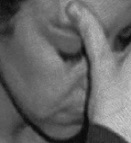
These emotional balancing points are located one finger-width above the eyebrows, in line with the center of the iris. Place the thumb above one eye and the third finger above the other eye. This will give gentle stimulation to GB 14 on both sides. These two points require the lightest possible touch. Stimulating these points relieves pain, shock, and trauma, while clearing the mind.
Inner Gate (P6)

This point is three finger-widths away from the center of the crease inside the wrist. Place the right thumb on the point on the left arm. Wrap your fingertips around the outside of the arm and place them directly behind your thumb. Firmly grasp the arm for one minute. Breathe deeply. Switch wrists and hold for another minute. This point can relieve nervousness, shock, trauma, nausea, insomnia, palpitations, and wrist pain. Activating this point also calms emotional upset and balances the inner world.
Outer Gate (T 5)

This point is three finger-widths away from the outer wrist crease, between the two forearm bones. To activate, place the middle three fingertips on this point and place the thumb on P6. Firmly grasp both points for one minute. Breathe deeply. Switch wrists and hold for another minute.
Center of Person (GV-26)
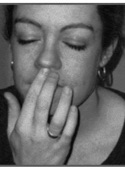
This point is in the middle of the upper lip, two-thirds of the way up towards the nose. To activate, use your index or middle fingertip to press firmly on GV 26. Place your finger so that you angle some pressure into the upper gum. Breathe deeply and hold for two minutes. This point reduces emotional shock, restores consciousness, calms the spirit and improves memory and concentration. It also relieves dizziness, nosebleeds, muscle cramps, and pain.
